TEACHING YOUNG LEARNERS LISTENING AND SPEAKING SKILLS

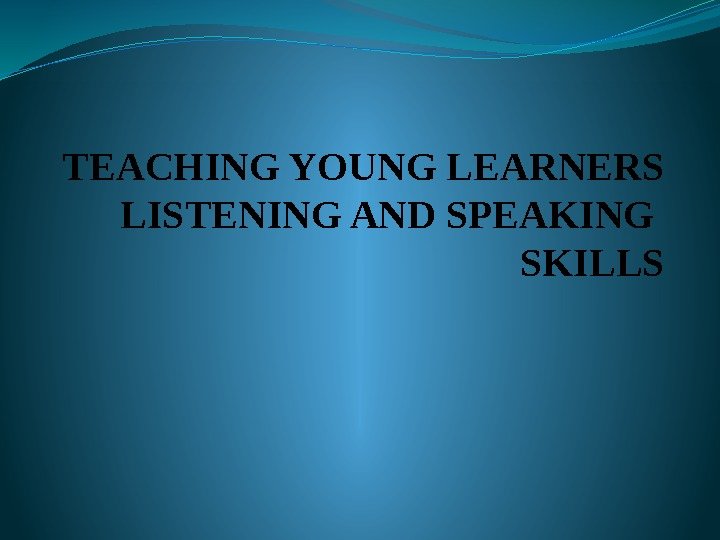
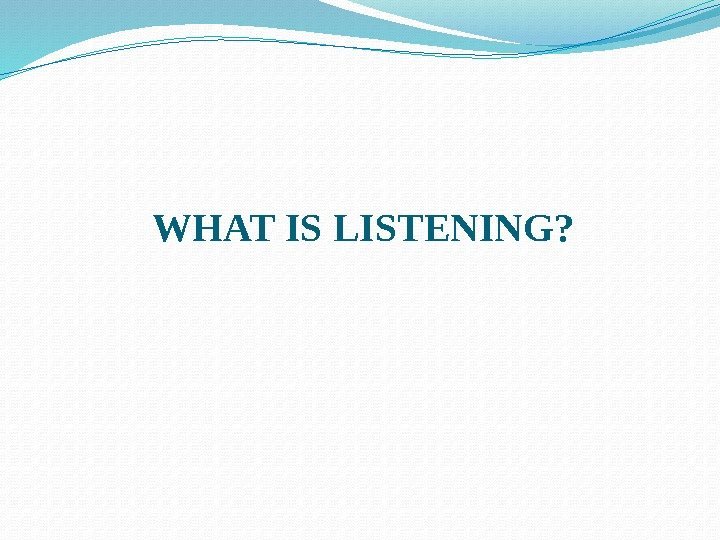
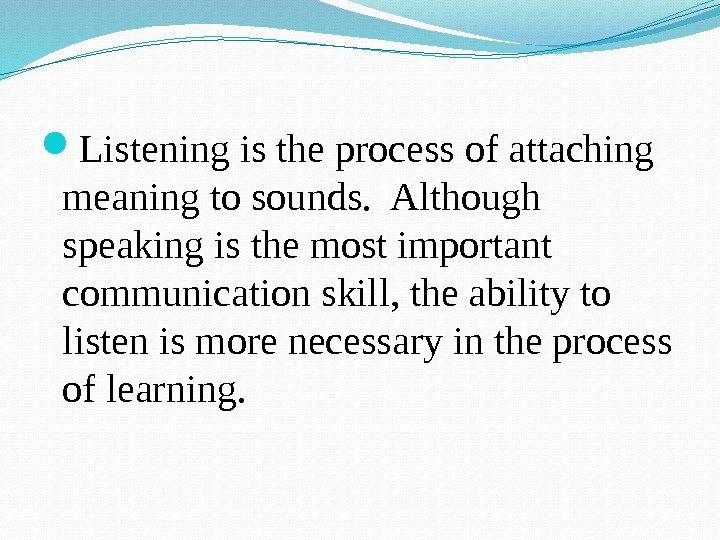
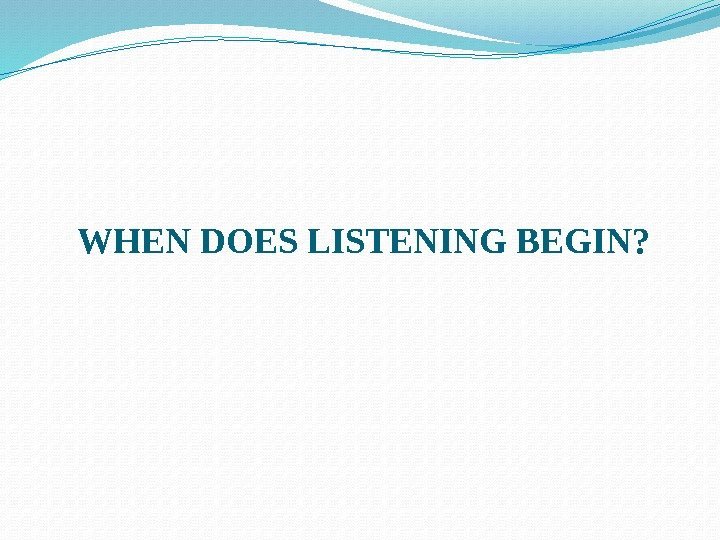
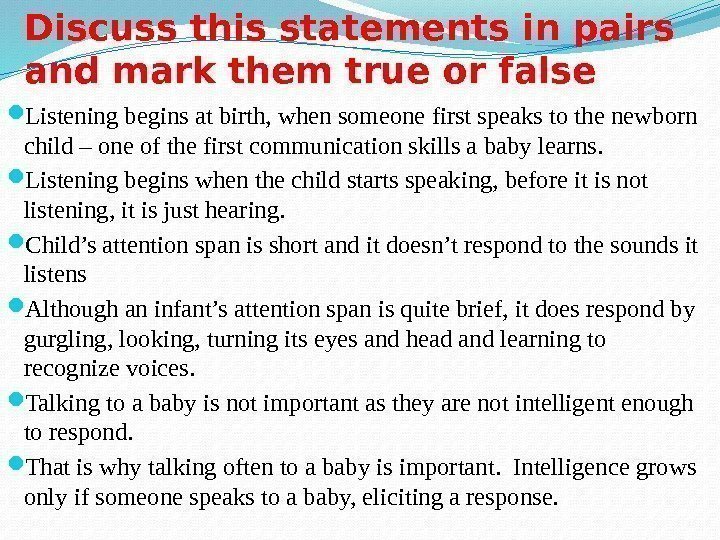
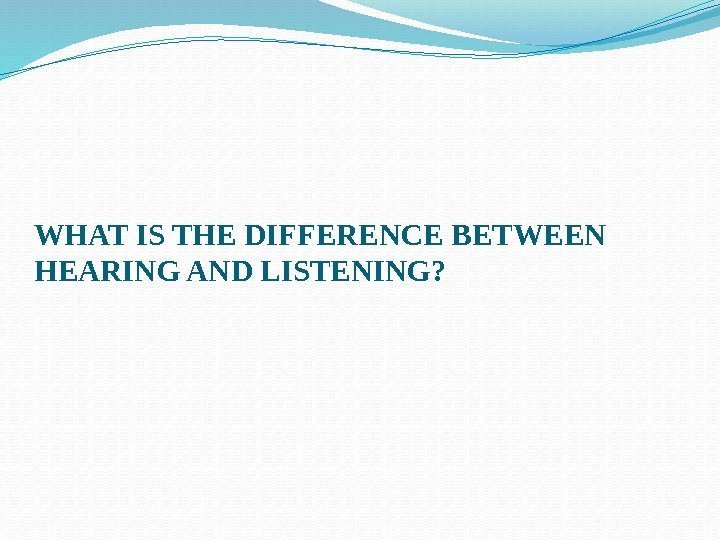
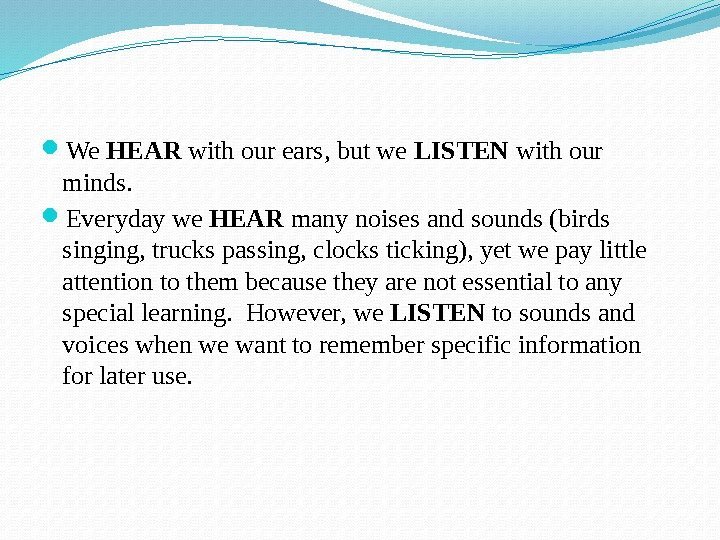
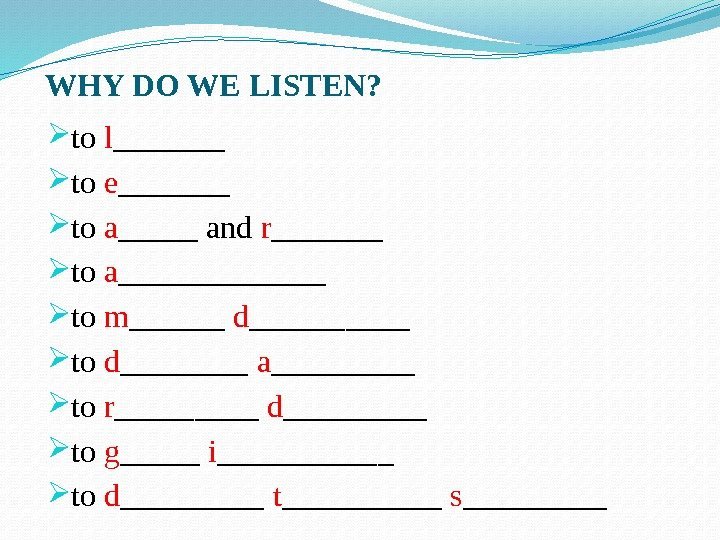
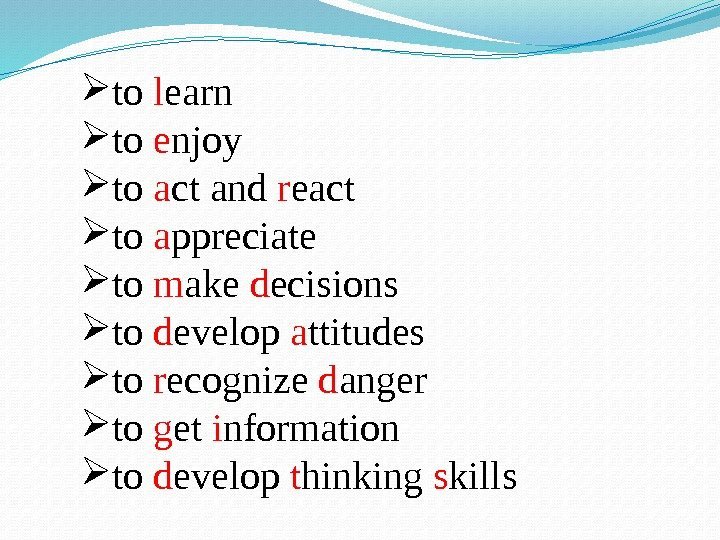
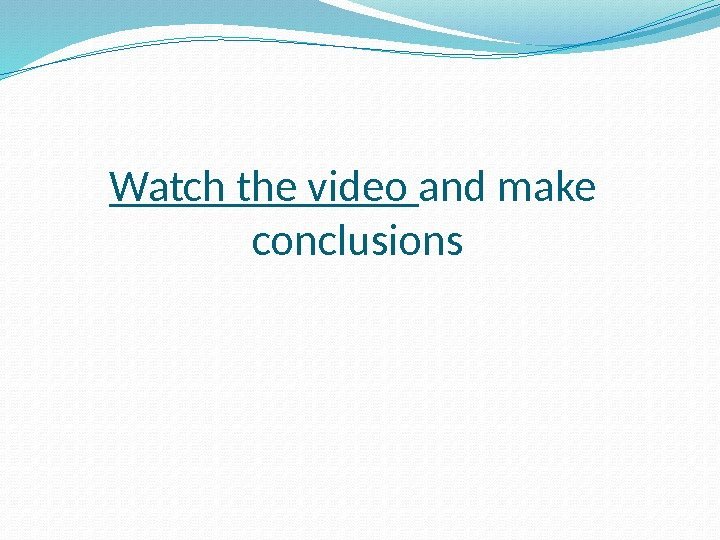
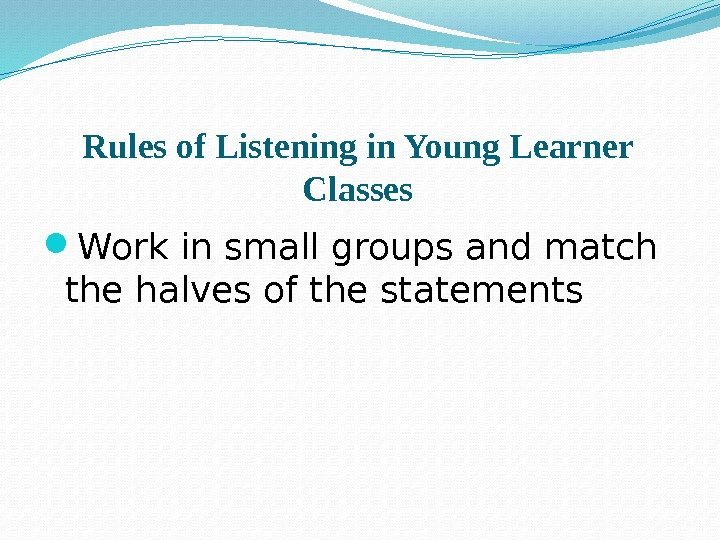
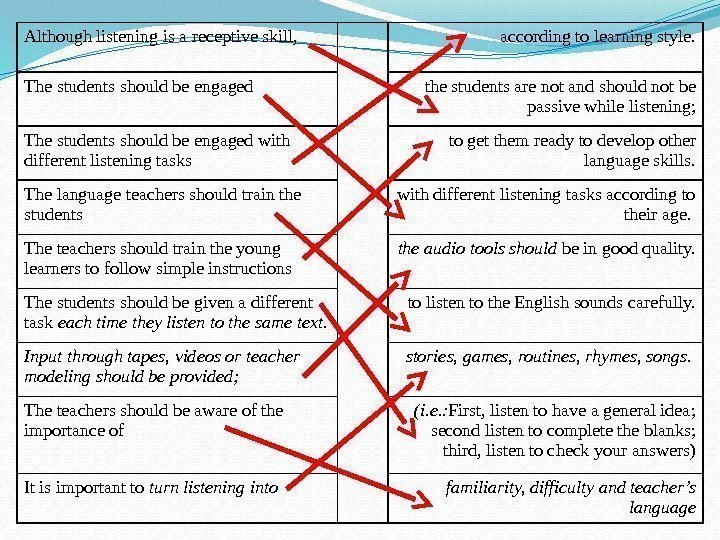
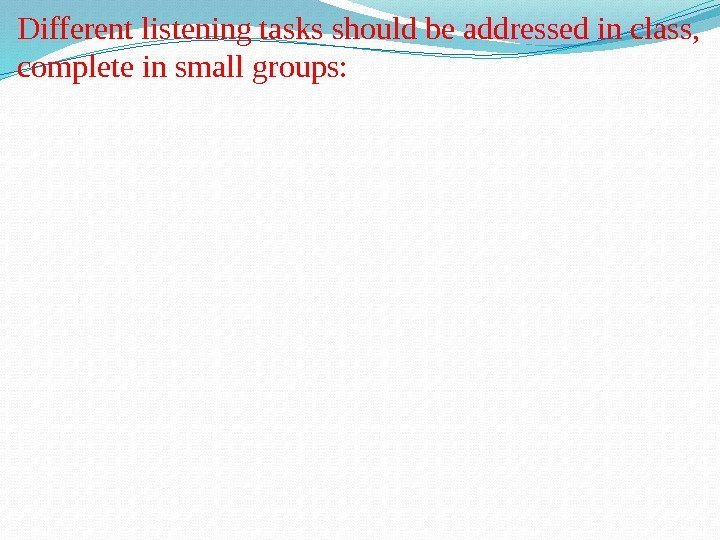

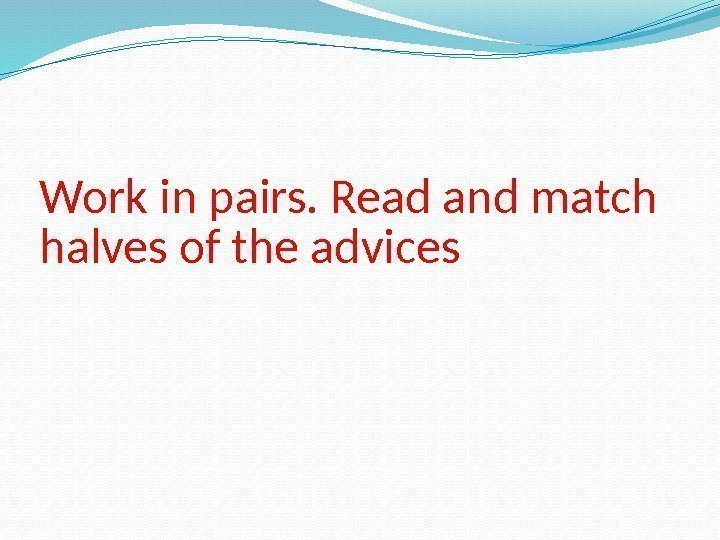
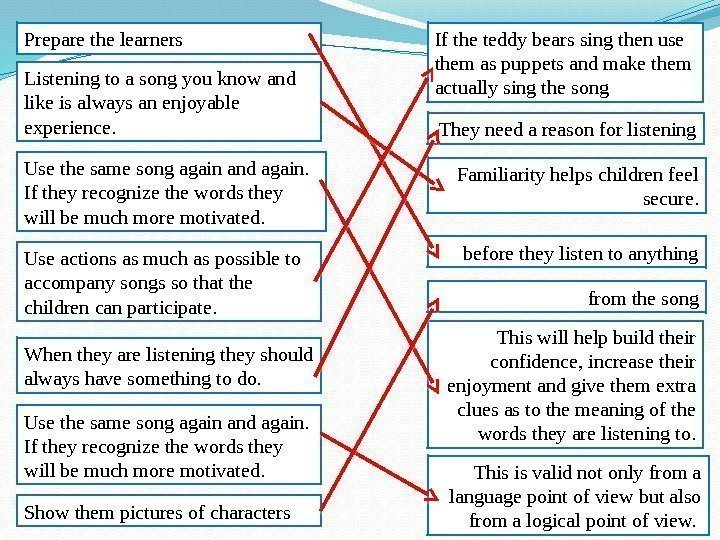
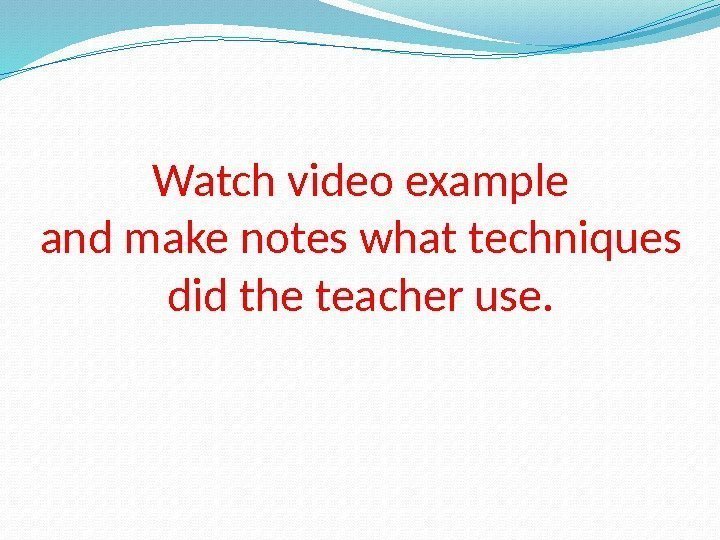
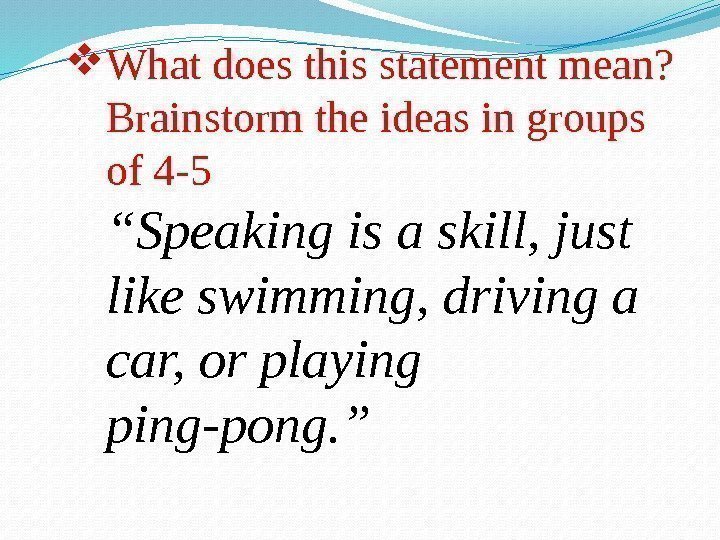
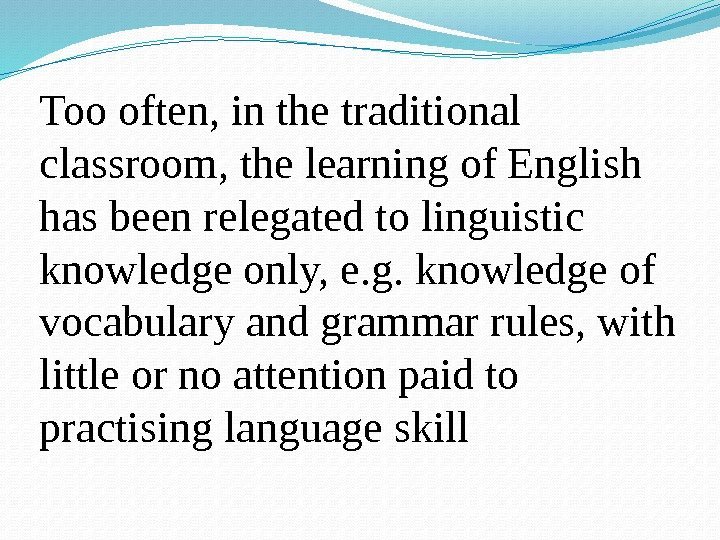
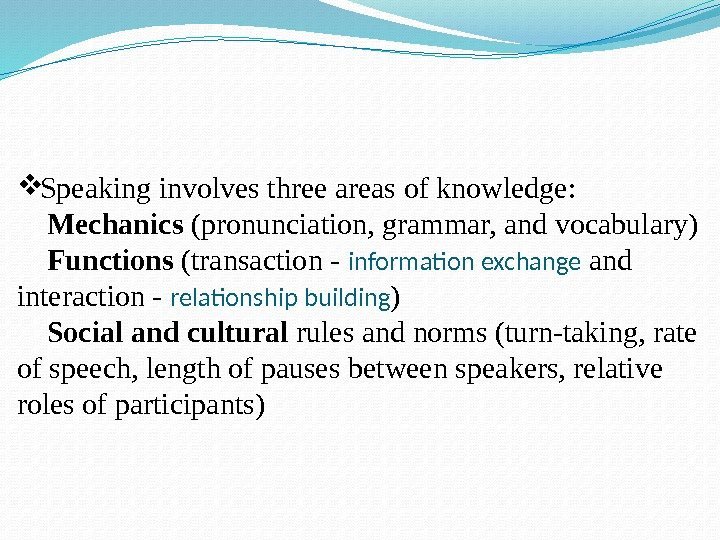
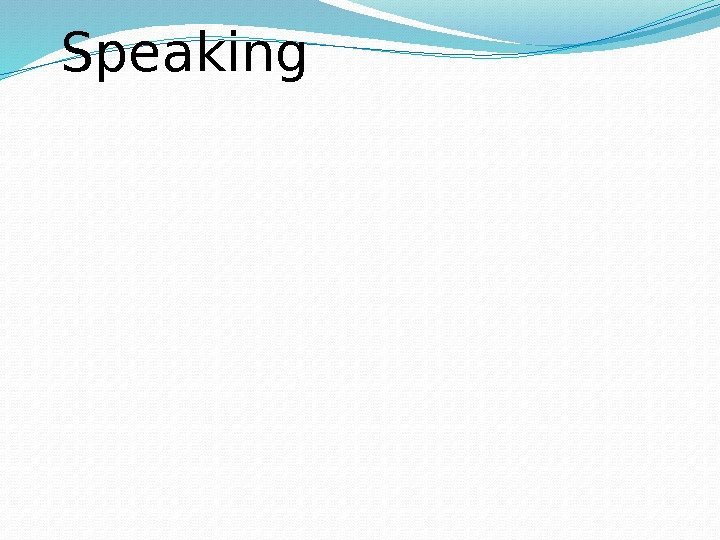
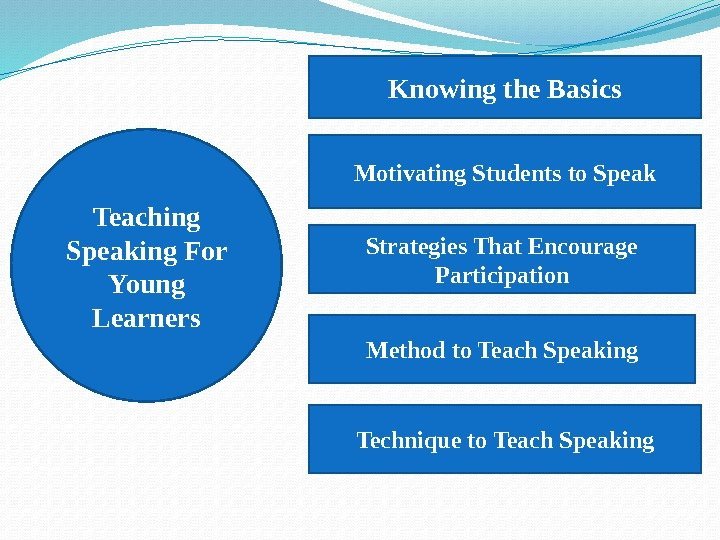
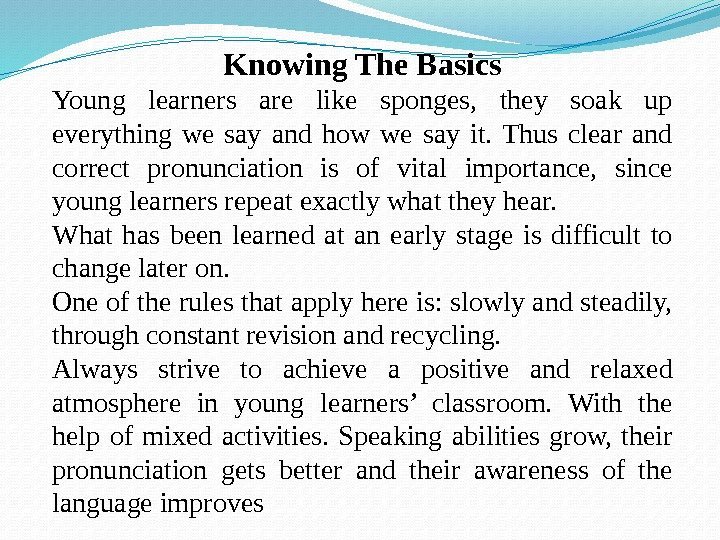
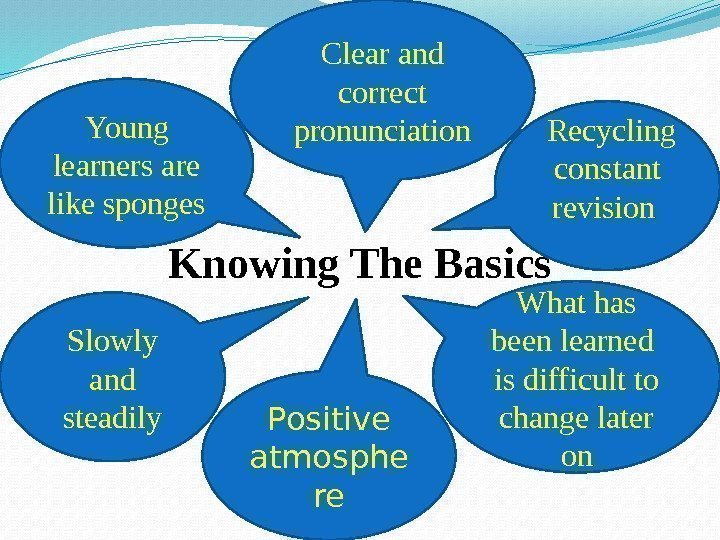
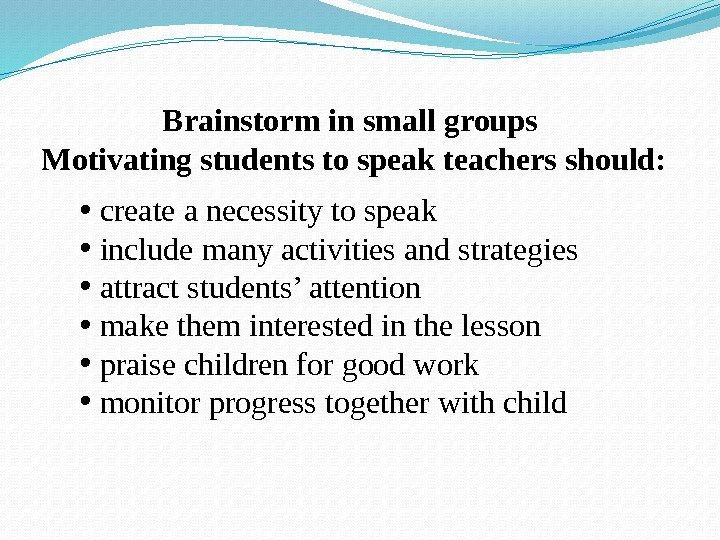
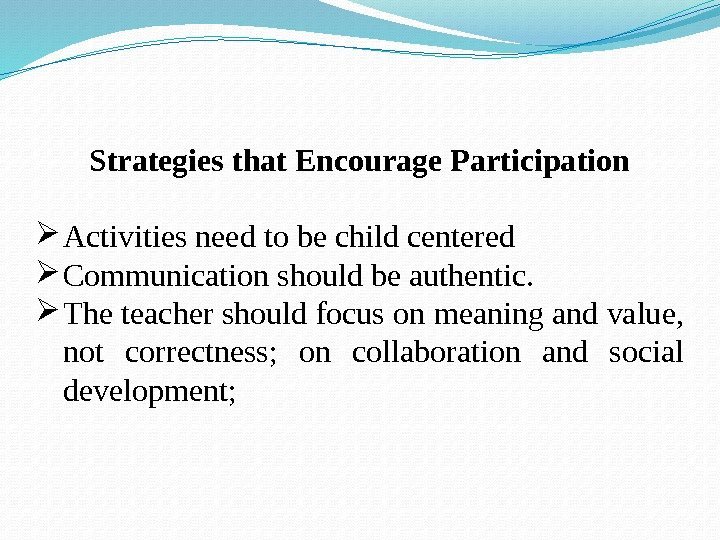
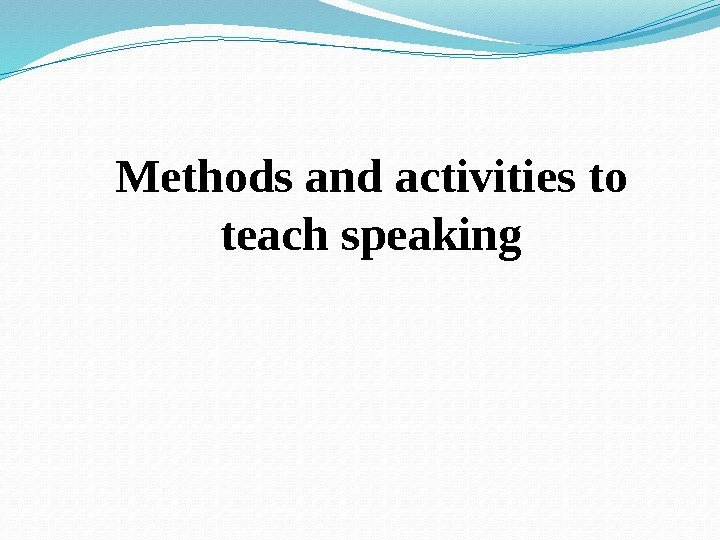

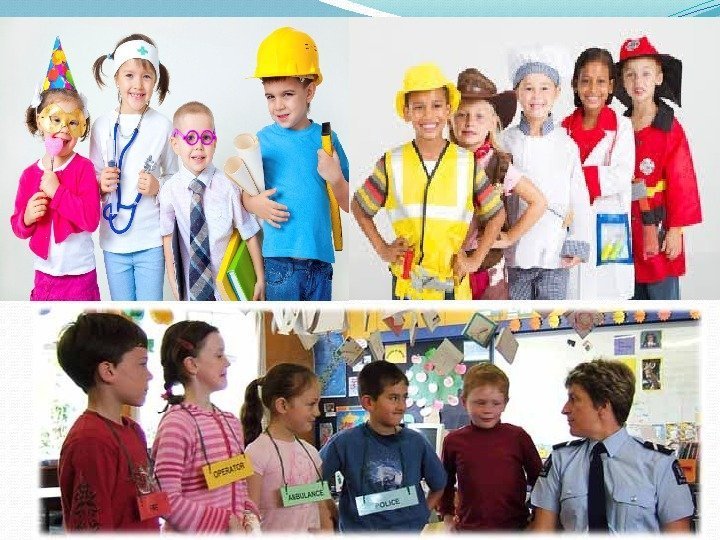
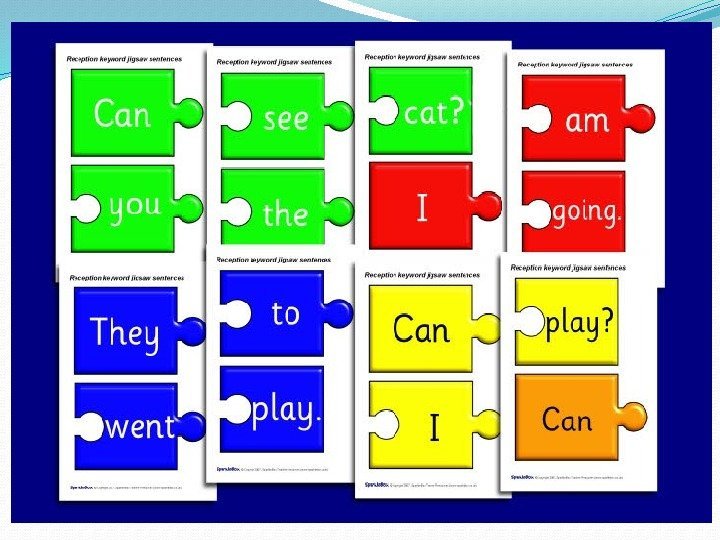
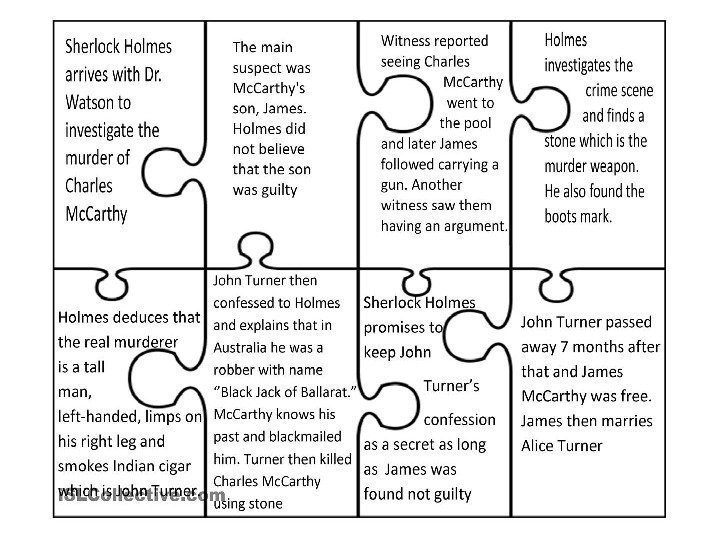
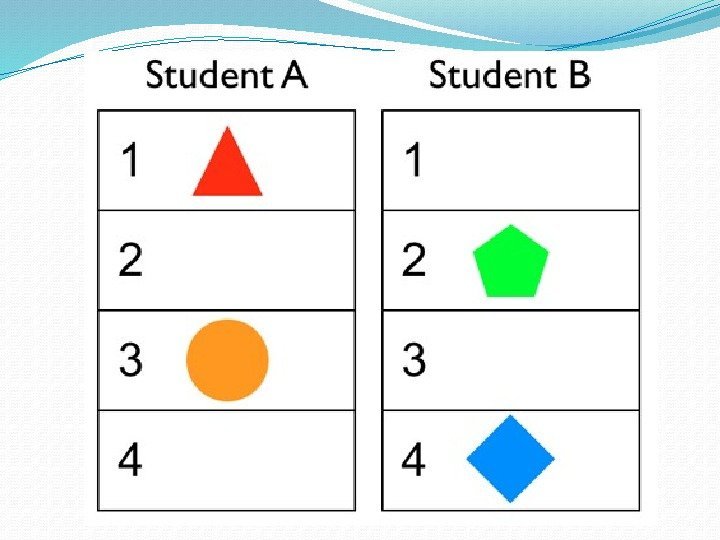
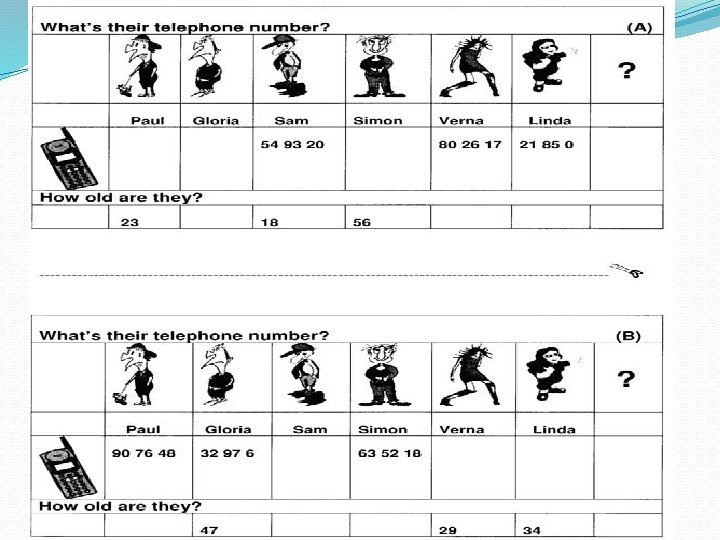

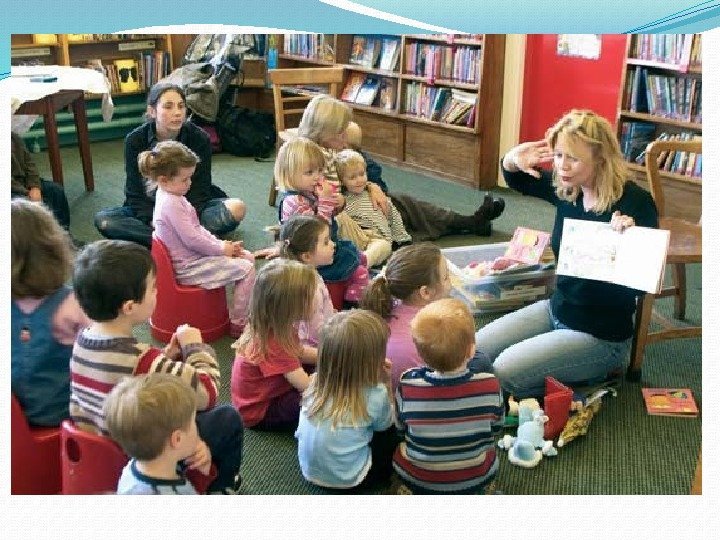
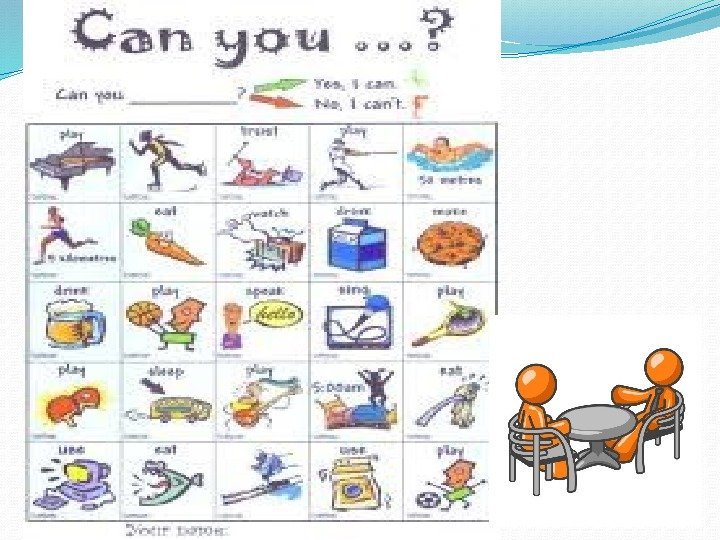
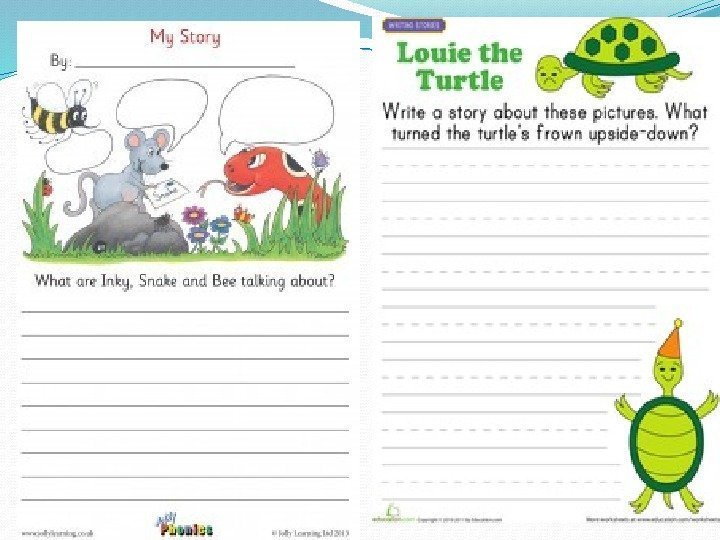
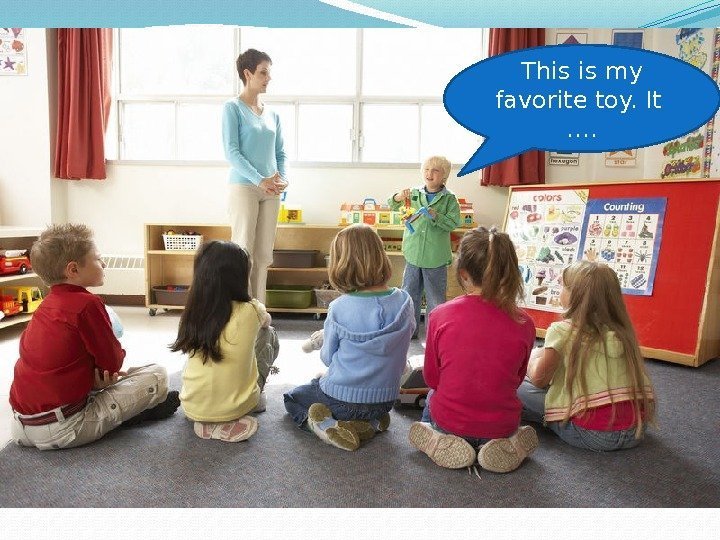
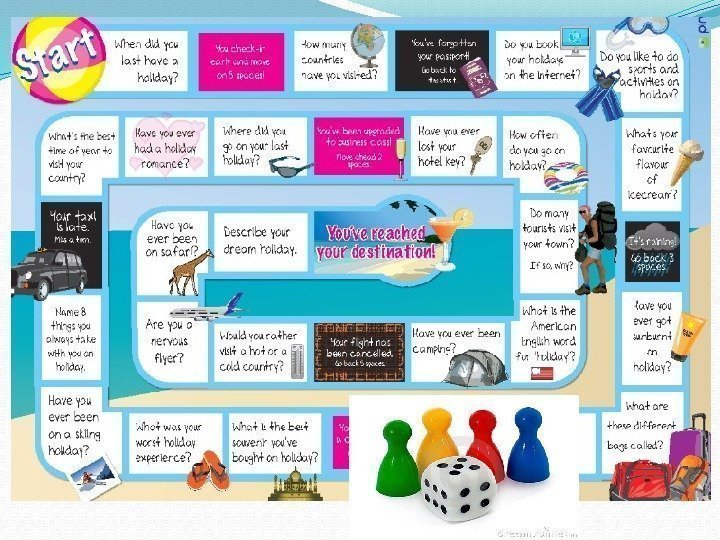

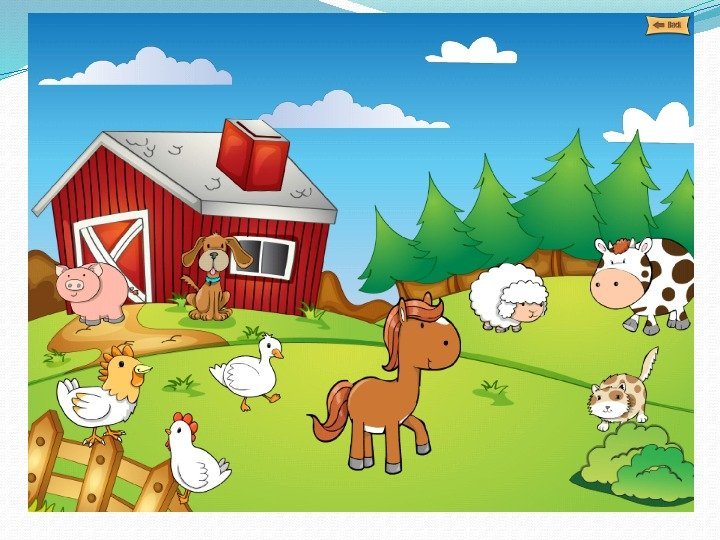

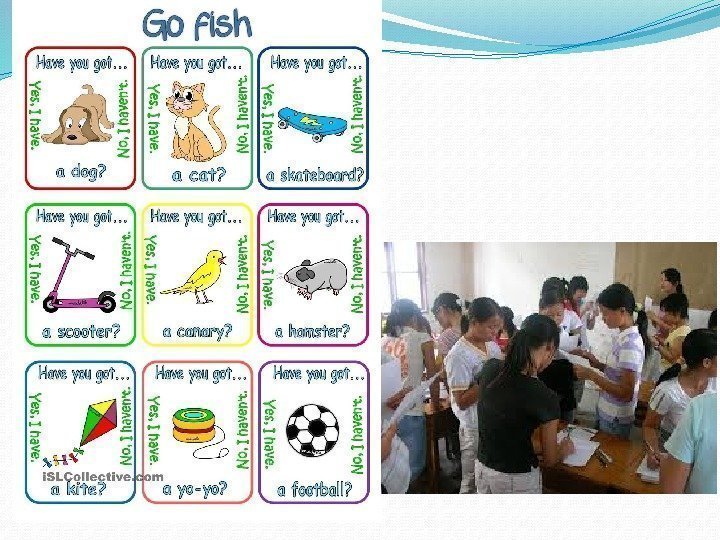
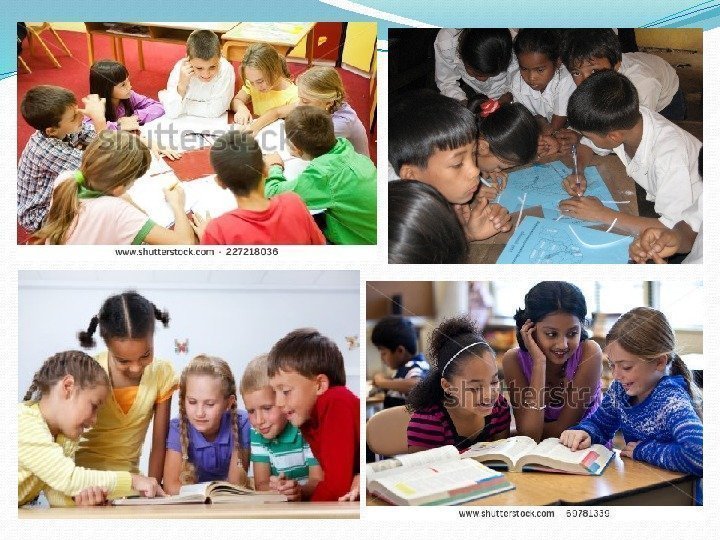
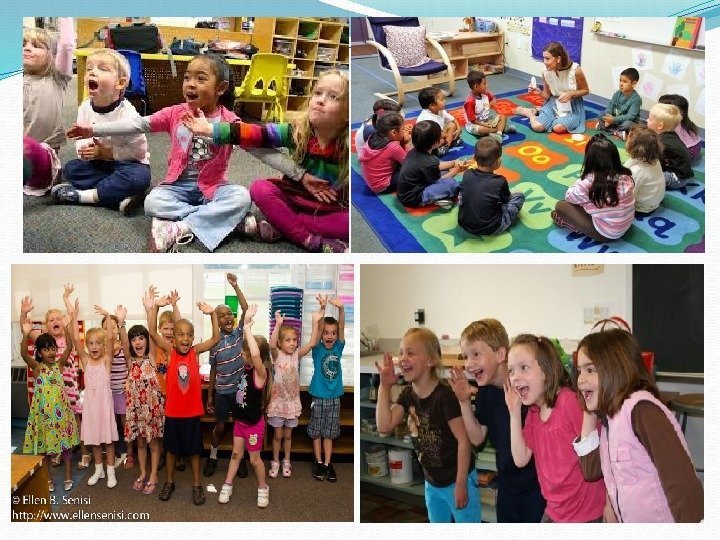
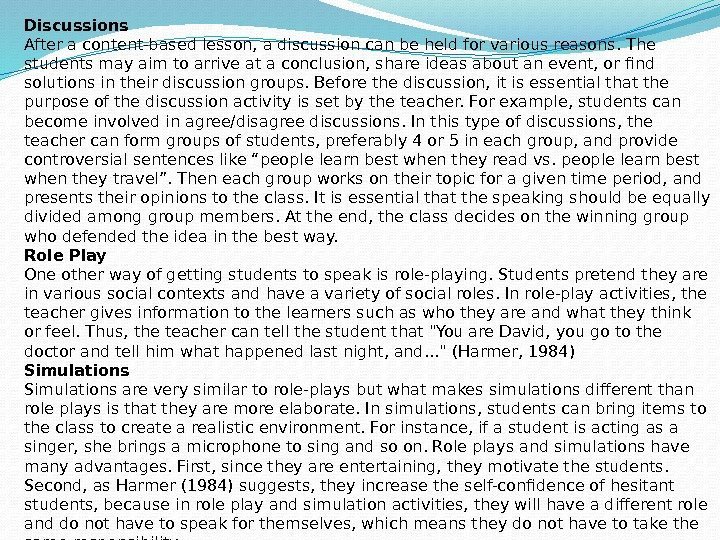
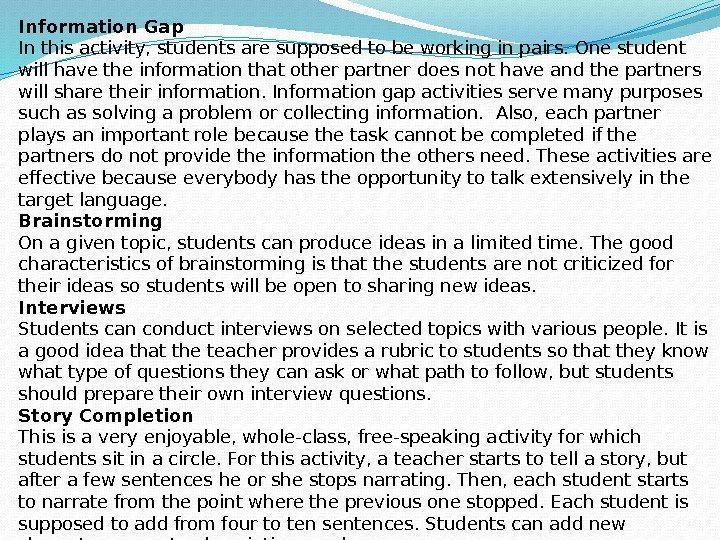
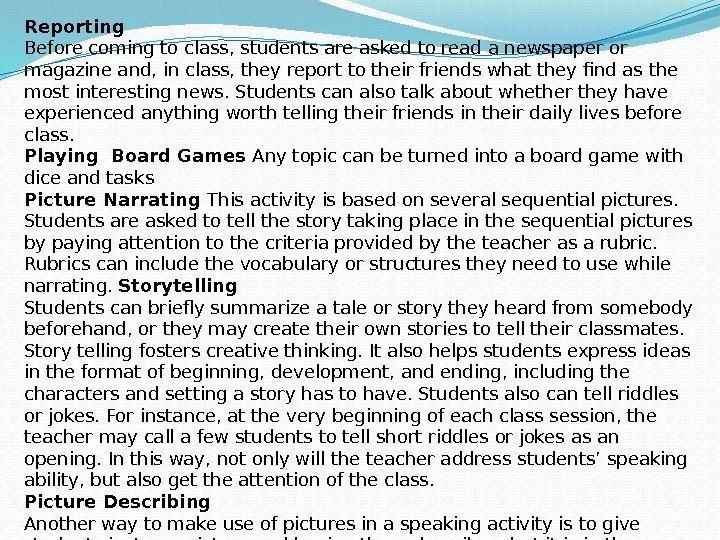
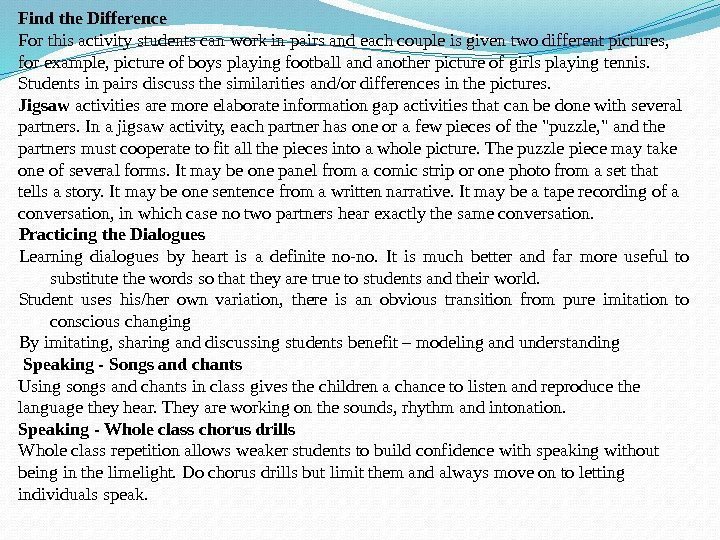
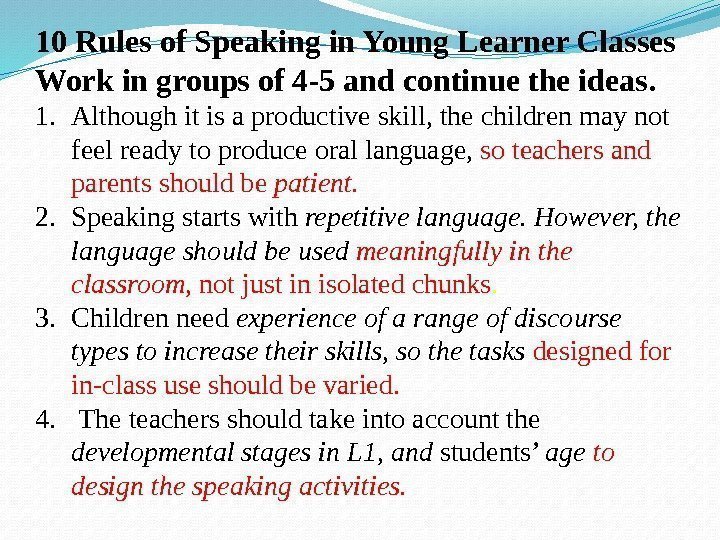
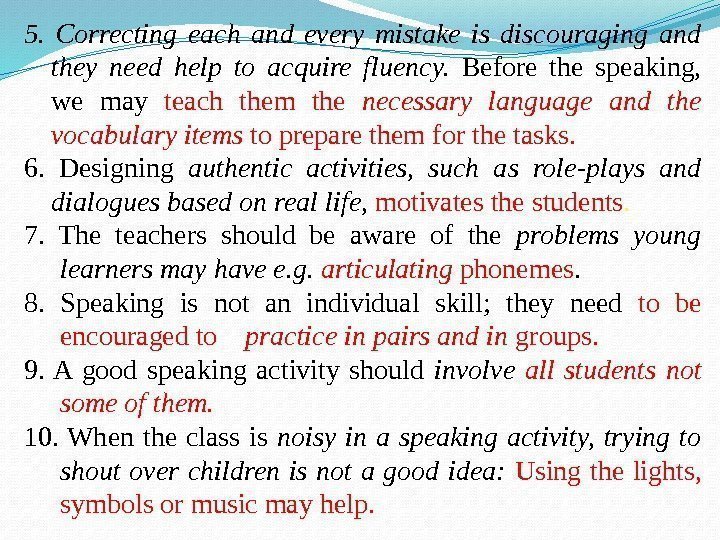
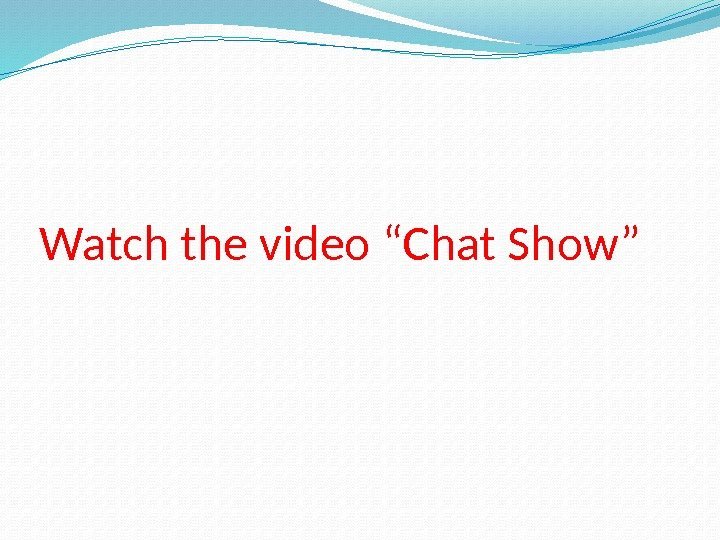
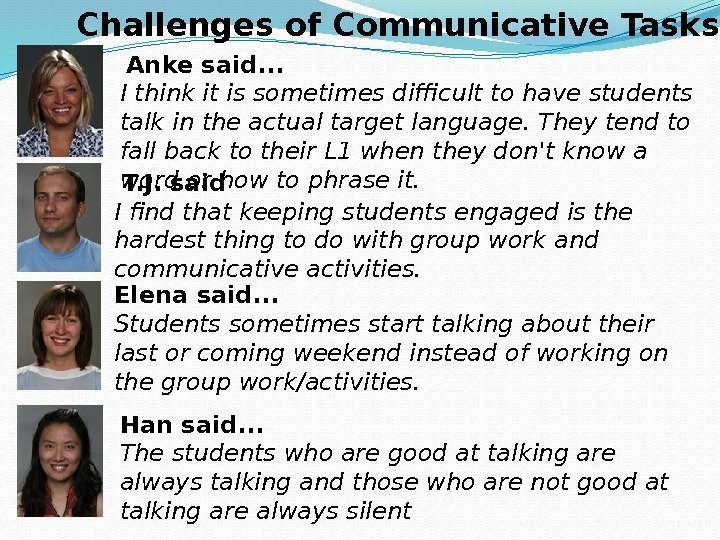
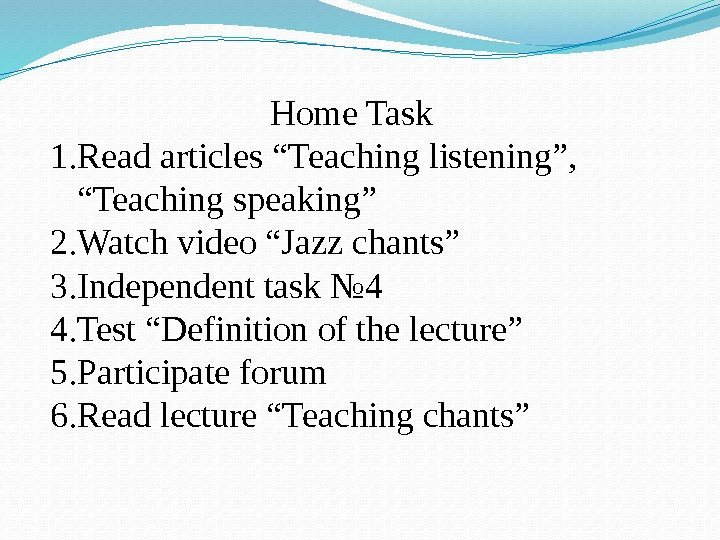
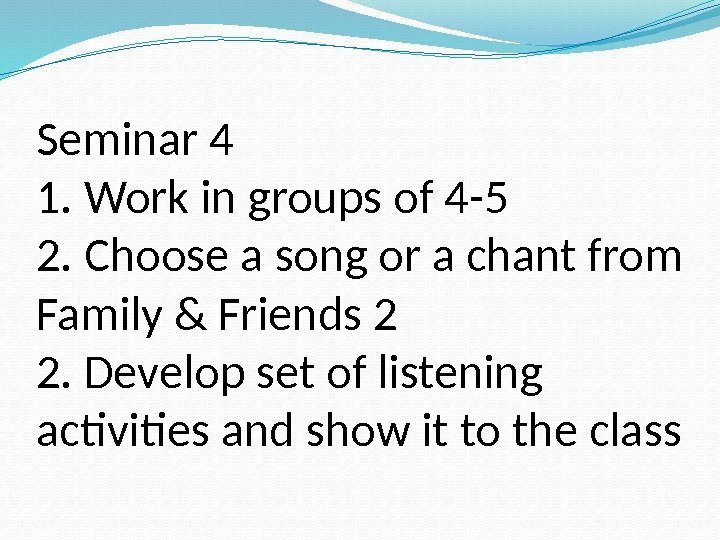
listening_and_speaking.pptx
- Размер: 4.6 Мб
- Автор: Mereke Kaskyrbekkyzy
- Количество слайдов: 55
Описание презентации TEACHING YOUNG LEARNERS LISTENING AND SPEAKING SKILLS по слайдам
 TEACHING YOUNG LEARNERS LISTENING AND SPEAKING SKILLS
TEACHING YOUNG LEARNERS LISTENING AND SPEAKING SKILLS
 WHAT IS LISTENING?
WHAT IS LISTENING?
 Listening is the process of attaching meaning to sounds. Although speaking is the most important communication skill, the ability to listen is more necessary in the process of learning.
Listening is the process of attaching meaning to sounds. Although speaking is the most important communication skill, the ability to listen is more necessary in the process of learning.
 WHEN DOES LISTENING BEGIN?
WHEN DOES LISTENING BEGIN?
 Listening begins at birth, when someone first speaks to the newborn child – one of the first communication skills a baby learns. Listening begins when the child starts speaking, before it is not listening, it is just hearing. Child’s attention span is short and it doesn’t respond to the sounds it listens Although an infant’s attention span is quite brief, it does respond by gurgling, looking, turning its eyes and head and learning to recognize voices. Talking to a baby is not important as they are not intelligent enough to respond. That is why talking often to a baby is important. Intelligence grows only if someone speaks to a baby, eliciting a response. Discuss this statements in pairs and mark them true or false
Listening begins at birth, when someone first speaks to the newborn child – one of the first communication skills a baby learns. Listening begins when the child starts speaking, before it is not listening, it is just hearing. Child’s attention span is short and it doesn’t respond to the sounds it listens Although an infant’s attention span is quite brief, it does respond by gurgling, looking, turning its eyes and head and learning to recognize voices. Talking to a baby is not important as they are not intelligent enough to respond. That is why talking often to a baby is important. Intelligence grows only if someone speaks to a baby, eliciting a response. Discuss this statements in pairs and mark them true or false
 WHAT IS THE DIFFERENCE BETWEEN HEARING AND LISTENING?
WHAT IS THE DIFFERENCE BETWEEN HEARING AND LISTENING?
 We HEAR with our ears, but we LISTEN with our minds. Everyday we HEAR many noises and sounds (birds singing, trucks passing, clocks ticking), yet we pay little attention to them because they are not essential to any special learning. However, we LISTEN to sounds and voices when we want to remember specific information for later use.
We HEAR with our ears, but we LISTEN with our minds. Everyday we HEAR many noises and sounds (birds singing, trucks passing, clocks ticking), yet we pay little attention to them because they are not essential to any special learning. However, we LISTEN to sounds and voices when we want to remember specific information for later use.
 WHY DO WE LISTEN? to l _______ to e _______ to a _____ and r _______ to a _______ to m ______ d _____ to d ____ a _____ to r _____ d _____ to g _____ i ______ to d _____ t _____ s _____
WHY DO WE LISTEN? to l _______ to e _______ to a _____ and r _______ to a _______ to m ______ d _____ to d ____ a _____ to r _____ d _____ to g _____ i ______ to d _____ t _____ s _____
 to l earn to e njoy to a ct and r eact to a ppreciate to m ake d ecisions to d evelop a ttitudes to r ecognize d anger to g et i nformation to d evelop t hinking s kills
to l earn to e njoy to a ct and r eact to a ppreciate to m ake d ecisions to d evelop a ttitudes to r ecognize d anger to g et i nformation to d evelop t hinking s kills
 Watch the video and make conclusions
Watch the video and make conclusions
 Rules of Listening in Young Learner Classes Work in small groups and match the halves of the statements
Rules of Listening in Young Learner Classes Work in small groups and match the halves of the statements
 Although listening is a receptive skill, according to learning style. The students should be engaged the students are not and should not be passive while listening; The students should be engaged with different listening tasks to get them ready to develop other language skills. The language teachers should train the students with different listening tasks according to their age. The teachers should train the young learners to follow simple instructions the audio tools should be in good quality. The students should be given a different task each time they listen to the same text. to listen to the English sounds carefully. Input through tapes, videos or teacher modeling should be provided; stories, games, routines, rhymes, songs. The teachers should be aware of the importance of (i. e. : First, listen to have a general idea; second listen to complete the blanks; third, listen to check your answers) It is important to turn listening into familiarity, difficulty and teacher’s language
Although listening is a receptive skill, according to learning style. The students should be engaged the students are not and should not be passive while listening; The students should be engaged with different listening tasks to get them ready to develop other language skills. The language teachers should train the students with different listening tasks according to their age. The teachers should train the young learners to follow simple instructions the audio tools should be in good quality. The students should be given a different task each time they listen to the same text. to listen to the English sounds carefully. Input through tapes, videos or teacher modeling should be provided; stories, games, routines, rhymes, songs. The teachers should be aware of the importance of (i. e. : First, listen to have a general idea; second listen to complete the blanks; third, listen to check your answers) It is important to turn listening into familiarity, difficulty and teacher’s language
 Different listening tasks should be addressed in class, complete in small groups:
Different listening tasks should be addressed in class, complete in small groups:

 Work in pairs. Read and match halves of the advices
Work in pairs. Read and match halves of the advices
 Use the same song again and again. If they recognize the words they will be much more motivated. Prepare the learners Use actions as much as possible to accompany songs so that the children can participate. When they are listening they should always have something to do. Use the same song again and again. If they recognize the words they will be much more motivated. Listening to a song you know and like is always an enjoyable experience. If the teddy bears sing then use them as puppets and make them actually sing the song They need a reason for listening This will help build their confidence, increase their enjoyment and give them extra clues as to the meaning of the words they are listening to. before they listen to anything from the song. Familiarity helps children feel secure. This is valid not only from a language point of view but also from a logical point of view. Show them pictures of characters
Use the same song again and again. If they recognize the words they will be much more motivated. Prepare the learners Use actions as much as possible to accompany songs so that the children can participate. When they are listening they should always have something to do. Use the same song again and again. If they recognize the words they will be much more motivated. Listening to a song you know and like is always an enjoyable experience. If the teddy bears sing then use them as puppets and make them actually sing the song They need a reason for listening This will help build their confidence, increase their enjoyment and give them extra clues as to the meaning of the words they are listening to. before they listen to anything from the song. Familiarity helps children feel secure. This is valid not only from a language point of view but also from a logical point of view. Show them pictures of characters
 Watch video example and make notes what techniques did the teacher use.
Watch video example and make notes what techniques did the teacher use.
 What does this statement mean? Brainstorm the ideas in groups of 4 -5 “Speaking is a skill, just like swimming, driving a car, or playing ping-pong. ”
What does this statement mean? Brainstorm the ideas in groups of 4 -5 “Speaking is a skill, just like swimming, driving a car, or playing ping-pong. ”
 Too often, in the traditional classroom, the learning of English has been relegated to linguistic knowledge only, e. g. knowledge of vocabulary and grammar rules, with little or no attention paid to practising language skill
Too often, in the traditional classroom, the learning of English has been relegated to linguistic knowledge only, e. g. knowledge of vocabulary and grammar rules, with little or no attention paid to practising language skill
 Speaking involves three areas of knowledge: Mechanics (pronunciation, grammar, and vocabulary) Functions (transaction — information exchange and interaction — relationship building ) Social and cultural rules and norms (turn-taking, rate of speech, length of pauses between speakers, relative roles of participants)
Speaking involves three areas of knowledge: Mechanics (pronunciation, grammar, and vocabulary) Functions (transaction — information exchange and interaction — relationship building ) Social and cultural rules and norms (turn-taking, rate of speech, length of pauses between speakers, relative roles of participants)
 Speaking
Speaking
 Teaching Speaking For Young Learners Knowing the Basics Motivating Students to Speak Strategies That Encourage Participation Method to Teach Speaking Technique to Teach Speaking
Teaching Speaking For Young Learners Knowing the Basics Motivating Students to Speak Strategies That Encourage Participation Method to Teach Speaking Technique to Teach Speaking
 Knowing The Basics Young learners are like sponges, they soak up everything we say and how we say it. Thus clear and correct pronunciation is of vital importance, since young learners repeat exactly what they hear. What has been learned at an early stage is difficult to change later on. One of the rules that apply here is: slowly and steadily, through constant revision and recycling. Always strive to achieve a positive and relaxed atmosphere in young learners’ classroom. With the help of mixed activities. Speaking abilities grow, their pronunciation gets better and their awareness of the language improves
Knowing The Basics Young learners are like sponges, they soak up everything we say and how we say it. Thus clear and correct pronunciation is of vital importance, since young learners repeat exactly what they hear. What has been learned at an early stage is difficult to change later on. One of the rules that apply here is: slowly and steadily, through constant revision and recycling. Always strive to achieve a positive and relaxed atmosphere in young learners’ classroom. With the help of mixed activities. Speaking abilities grow, their pronunciation gets better and their awareness of the language improves
 Knowing The Basics What has been learned is difficult to change later on. Clear and correct pronunciation. Young learners are like sponges Positive atmosphe re Recycling constant revision Slowly and steadily
Knowing The Basics What has been learned is difficult to change later on. Clear and correct pronunciation. Young learners are like sponges Positive atmosphe re Recycling constant revision Slowly and steadily
 Brainstorm in small groups Motivating students to speak teachers should: • create a necessity to speak • include many activities and strategies • attract students’ attention • make them interested in the lesson • praise children for good work • monitor progress together with child
Brainstorm in small groups Motivating students to speak teachers should: • create a necessity to speak • include many activities and strategies • attract students’ attention • make them interested in the lesson • praise children for good work • monitor progress together with child
 Strategies that Encourage Participation Activities need to be child centered Communication should be authentic. The teacher should focus on meaning and value, not correctness; on collaboration and social development;
Strategies that Encourage Participation Activities need to be child centered Communication should be authentic. The teacher should focus on meaning and value, not correctness; on collaboration and social development;
 Methods and activities to teach speaking
Methods and activities to teach speaking
 Role Play. Simulations. Information Gap (Jigsaw)Brainstorming. Storytelling. Interviews. Story Completion. Reporting. Board games. Picture Narrating. Picture Describing. Find the Difference. Mingling Doing a drill. Problem solving tasks. Action stories. Discussions. Drills. Group work Songs chants rhymes
Role Play. Simulations. Information Gap (Jigsaw)Brainstorming. Storytelling. Interviews. Story Completion. Reporting. Board games. Picture Narrating. Picture Describing. Find the Difference. Mingling Doing a drill. Problem solving tasks. Action stories. Discussions. Drills. Group work Songs chants rhymes









 This is my favorite toy. It ….
This is my favorite toy. It ….







 Discussions After a content-based lesson, a discussion can be held for various reasons. The students may aim to arrive at a conclusion, share ideas about an event, or find solutions in their discussion groups. Before the discussion, it is essential that the purpose of the discussion activity is set by the teacher. For example, students can become involved in agree/disagree discussions. In this type of discussions, the teacher can form groups of students, preferably 4 or 5 in each group, and provide controversial sentences like “people learn best when they read vs. people learn best when they travel”. Then each group works on their topic for a given time period, and presents their opinions to the class. It is essential that the speaking should be equally divided among group members. At the end, the class decides on the winning group who defended the idea in the best way. Role Play One other way of getting students to speak is role-playing. Students pretend they are in various social contexts and have a variety of social roles. In role-play activities, the teacher gives information to the learners such as who they are and what they think or feel. Thus, the teacher can tell the student that «You are David, you go to the doctor and tell him what happened last night, and…» (Harmer, 1984) Simulations are very similar to role-plays but what makes simulations different than role plays is that they are more elaborate. In simulations, students can bring items to the class to create a realistic environment. For instance, if a student is acting as a singer, she brings a microphone to sing and so on. Role plays and simulations have many advantages. First, since they are entertaining, they motivate the students. Second, as Harmer (1984) suggests, they increase the self-confidence of hesitant students, because in role play and simulation activities, they will have a different role and do not have to speak for themselves, which means they do not have to take the same responsibility.
Discussions After a content-based lesson, a discussion can be held for various reasons. The students may aim to arrive at a conclusion, share ideas about an event, or find solutions in their discussion groups. Before the discussion, it is essential that the purpose of the discussion activity is set by the teacher. For example, students can become involved in agree/disagree discussions. In this type of discussions, the teacher can form groups of students, preferably 4 or 5 in each group, and provide controversial sentences like “people learn best when they read vs. people learn best when they travel”. Then each group works on their topic for a given time period, and presents their opinions to the class. It is essential that the speaking should be equally divided among group members. At the end, the class decides on the winning group who defended the idea in the best way. Role Play One other way of getting students to speak is role-playing. Students pretend they are in various social contexts and have a variety of social roles. In role-play activities, the teacher gives information to the learners such as who they are and what they think or feel. Thus, the teacher can tell the student that «You are David, you go to the doctor and tell him what happened last night, and…» (Harmer, 1984) Simulations are very similar to role-plays but what makes simulations different than role plays is that they are more elaborate. In simulations, students can bring items to the class to create a realistic environment. For instance, if a student is acting as a singer, she brings a microphone to sing and so on. Role plays and simulations have many advantages. First, since they are entertaining, they motivate the students. Second, as Harmer (1984) suggests, they increase the self-confidence of hesitant students, because in role play and simulation activities, they will have a different role and do not have to speak for themselves, which means they do not have to take the same responsibility.
 Information Gap In this activity, students are supposed to be working in pairs. One student will have the information that other partner does not have and the partners will share their information. Information gap activities serve many purposes such as solving a problem or collecting information. Also, each partner plays an important role because the task cannot be completed if the partners do not provide the information the others need. These activities are effective because everybody has the opportunity to talk extensively in the target language. Brainstorming On a given topic, students can produce ideas in a limited time. The good characteristics of brainstorming is that the students are not criticized for their ideas so students will be open to sharing new ideas. Interviews Students can conduct interviews on selected topics with various people. It is a good idea that the teacher provides a rubric to students so that they know what type of questions they can ask or what path to follow, but students should prepare their own interview questions. Story Completion This is a very enjoyable, whole-class, free-speaking activity for which students sit in a circle. For this activity, a teacher starts to tell a story, but after a few sentences he or she stops narrating. Then, each student starts to narrate from the point where the previous one stopped. Each student is supposed to add from four to ten sentences. Students can add new characters, events, descriptions and so on.
Information Gap In this activity, students are supposed to be working in pairs. One student will have the information that other partner does not have and the partners will share their information. Information gap activities serve many purposes such as solving a problem or collecting information. Also, each partner plays an important role because the task cannot be completed if the partners do not provide the information the others need. These activities are effective because everybody has the opportunity to talk extensively in the target language. Brainstorming On a given topic, students can produce ideas in a limited time. The good characteristics of brainstorming is that the students are not criticized for their ideas so students will be open to sharing new ideas. Interviews Students can conduct interviews on selected topics with various people. It is a good idea that the teacher provides a rubric to students so that they know what type of questions they can ask or what path to follow, but students should prepare their own interview questions. Story Completion This is a very enjoyable, whole-class, free-speaking activity for which students sit in a circle. For this activity, a teacher starts to tell a story, but after a few sentences he or she stops narrating. Then, each student starts to narrate from the point where the previous one stopped. Each student is supposed to add from four to ten sentences. Students can add new characters, events, descriptions and so on.
 Reporting Before coming to class, students are asked to read a newspaper or magazine and, in class, they report to their friends what they find as the most interesting news. Students can also talk about whether they have experienced anything worth telling their friends in their daily lives before class. Playing Board Games Any topic can be turned into a board game with dice and tasks Picture Narrating This activity is based on several sequential pictures. Students are asked to tell the story taking place in the sequential pictures by paying attention to the criteria provided by the teacher as a rubric. Rubrics can include the vocabulary or structures they need to use while narrating. Storytelling Students can briefly summarize a tale or story they heard from somebody beforehand, or they may create their own stories to tell their classmates. Story telling fosters creative thinking. It also helps students express ideas in the format of beginning, development, and ending, including the characters and setting a story has to have. Students also can tell riddles or jokes. For instance, at the very beginning of each class session, the teacher may call a few students to tell short riddles or jokes as an opening. In this way, not only will the teacher address students’ speaking ability, but also get the attention of the class. Picture Describing Another way to make use of pictures in a speaking activity is to give students just one picture and having them describe what it is in the picture. For this activity students can form groups and each group is given a different picture. Students discuss the picture with their groups, then a spokesperson for each group describes the picture to the whole class. This activity fosters the creativity and imagination of the learners as well as their public speaking skills.
Reporting Before coming to class, students are asked to read a newspaper or magazine and, in class, they report to their friends what they find as the most interesting news. Students can also talk about whether they have experienced anything worth telling their friends in their daily lives before class. Playing Board Games Any topic can be turned into a board game with dice and tasks Picture Narrating This activity is based on several sequential pictures. Students are asked to tell the story taking place in the sequential pictures by paying attention to the criteria provided by the teacher as a rubric. Rubrics can include the vocabulary or structures they need to use while narrating. Storytelling Students can briefly summarize a tale or story they heard from somebody beforehand, or they may create their own stories to tell their classmates. Story telling fosters creative thinking. It also helps students express ideas in the format of beginning, development, and ending, including the characters and setting a story has to have. Students also can tell riddles or jokes. For instance, at the very beginning of each class session, the teacher may call a few students to tell short riddles or jokes as an opening. In this way, not only will the teacher address students’ speaking ability, but also get the attention of the class. Picture Describing Another way to make use of pictures in a speaking activity is to give students just one picture and having them describe what it is in the picture. For this activity students can form groups and each group is given a different picture. Students discuss the picture with their groups, then a spokesperson for each group describes the picture to the whole class. This activity fosters the creativity and imagination of the learners as well as their public speaking skills.
 Find the Difference For this activity students can work in pairs and each couple is given two different pictures, for example, picture of boys playing football and another picture of girls playing tennis. Students in pairs discuss the similarities and/or differences in the pictures. Jigsaw activities are more elaborate information gap activities that can be done with several partners. In a jigsaw activity, each partner has one or a few pieces of the «puzzle, » and the partners must cooperate to fit all the pieces into a whole picture. The puzzle piece may take one of several forms. It may be one panel from a comic strip or one photo from a set that tells a story. It may be one sentence from a written narrative. It may be a tape recording of a conversation, in which case no two partners hear exactly the same conversation. Practicing the Dialogues Learning dialogues by heart is a definite no-no. It is much better and far more useful to substitute the words so that they are true to students and their world. Student uses his/her own variation, there is an obvious transition from pure imitation to conscious changing By imitating, sharing and discussing students benefit – modeling and understanding Speaking — Songs and chants Using songs and chants in class gives the children a chance to listen and reproduce the language they hear. They are working on the sounds, rhythm and intonation. Speaking — Whole class chorus drills Whole class repetition allows weaker students to build confidence with speaking without being in the limelight. Do chorus drills but limit them and always move on to letting individuals speak.
Find the Difference For this activity students can work in pairs and each couple is given two different pictures, for example, picture of boys playing football and another picture of girls playing tennis. Students in pairs discuss the similarities and/or differences in the pictures. Jigsaw activities are more elaborate information gap activities that can be done with several partners. In a jigsaw activity, each partner has one or a few pieces of the «puzzle, » and the partners must cooperate to fit all the pieces into a whole picture. The puzzle piece may take one of several forms. It may be one panel from a comic strip or one photo from a set that tells a story. It may be one sentence from a written narrative. It may be a tape recording of a conversation, in which case no two partners hear exactly the same conversation. Practicing the Dialogues Learning dialogues by heart is a definite no-no. It is much better and far more useful to substitute the words so that they are true to students and their world. Student uses his/her own variation, there is an obvious transition from pure imitation to conscious changing By imitating, sharing and discussing students benefit – modeling and understanding Speaking — Songs and chants Using songs and chants in class gives the children a chance to listen and reproduce the language they hear. They are working on the sounds, rhythm and intonation. Speaking — Whole class chorus drills Whole class repetition allows weaker students to build confidence with speaking without being in the limelight. Do chorus drills but limit them and always move on to letting individuals speak.
 10 Rules of Speaking in Young Learner Classes Work in groups of 4 -5 and continue the ideas. 1. Although it is a productive skill, the children may not feel ready to produce oral language, so teachers and parents should be patient. 2. Speaking starts with repetitive language. However, the language should be used meaningfully in the classroom, not just in isolated chunks. 3. Children need experience of a range of discourse types to increase their skills, so the tasks designed for in-class use should be varied. 4. The teachers should take into account the developmental stages in L 1, and students’ age to design the speaking activities.
10 Rules of Speaking in Young Learner Classes Work in groups of 4 -5 and continue the ideas. 1. Although it is a productive skill, the children may not feel ready to produce oral language, so teachers and parents should be patient. 2. Speaking starts with repetitive language. However, the language should be used meaningfully in the classroom, not just in isolated chunks. 3. Children need experience of a range of discourse types to increase their skills, so the tasks designed for in-class use should be varied. 4. The teachers should take into account the developmental stages in L 1, and students’ age to design the speaking activities.
 5. Correcting each and every mistake is discouraging and they need help to acquire fluency. Before the speaking, we may teach them the necessary language and the vocabulary items to prepare them for the tasks. 6. Designing authentic activities, such as role-plays and dialogues based on real life , motivates the students. 7. The teachers should be aware of the problems young learners may have e. g. articulating phonemes. 8. Speaking is not an individual skill; they need to be encouraged to practice in pairs and in groups. 9. A good speaking activity should involve all students not some of them. 10. When the class is noisy in a speaking activity, trying to shout over children is not a good idea: Using the lights, symbols or music may help.
5. Correcting each and every mistake is discouraging and they need help to acquire fluency. Before the speaking, we may teach them the necessary language and the vocabulary items to prepare them for the tasks. 6. Designing authentic activities, such as role-plays and dialogues based on real life , motivates the students. 7. The teachers should be aware of the problems young learners may have e. g. articulating phonemes. 8. Speaking is not an individual skill; they need to be encouraged to practice in pairs and in groups. 9. A good speaking activity should involve all students not some of them. 10. When the class is noisy in a speaking activity, trying to shout over children is not a good idea: Using the lights, symbols or music may help.
 Watch the video “Chat Show”
Watch the video “Chat Show”
 Challenges of Communicative Tasks Anke said. . . I think it is sometimes difficult to have students talk in the actual target language. They tend to fall back to their L 1 when they don’t know a word or how to phrase it. T. J. said I find that keeping students engaged is the hardest thing to do with group work and communicative activities. Elena said. . . Students sometimes start talking about their last or coming weekend instead of working on the group work/activities. Han said. . . The students who are good at talking are always talking and those who are not good at talking are always silent
Challenges of Communicative Tasks Anke said. . . I think it is sometimes difficult to have students talk in the actual target language. They tend to fall back to their L 1 when they don’t know a word or how to phrase it. T. J. said I find that keeping students engaged is the hardest thing to do with group work and communicative activities. Elena said. . . Students sometimes start talking about their last or coming weekend instead of working on the group work/activities. Han said. . . The students who are good at talking are always talking and those who are not good at talking are always silent
 Home Task 1. Read articles “Teaching listening”, “Teaching speaking” 2. Watch video “Jazz chants” 3. Independent task № 4 4. Test “Definition of the lecture” 5. Participate forum 6. Read lecture “Teaching chants”
Home Task 1. Read articles “Teaching listening”, “Teaching speaking” 2. Watch video “Jazz chants” 3. Independent task № 4 4. Test “Definition of the lecture” 5. Participate forum 6. Read lecture “Teaching chants”
 Seminar 4 1. Work in groups of 4 -5 2. Choose a song or a chant from Family & Friends 2 2. Develop set of listening activities and show it to the class
Seminar 4 1. Work in groups of 4 -5 2. Choose a song or a chant from Family & Friends 2 2. Develop set of listening activities and show it to the class

